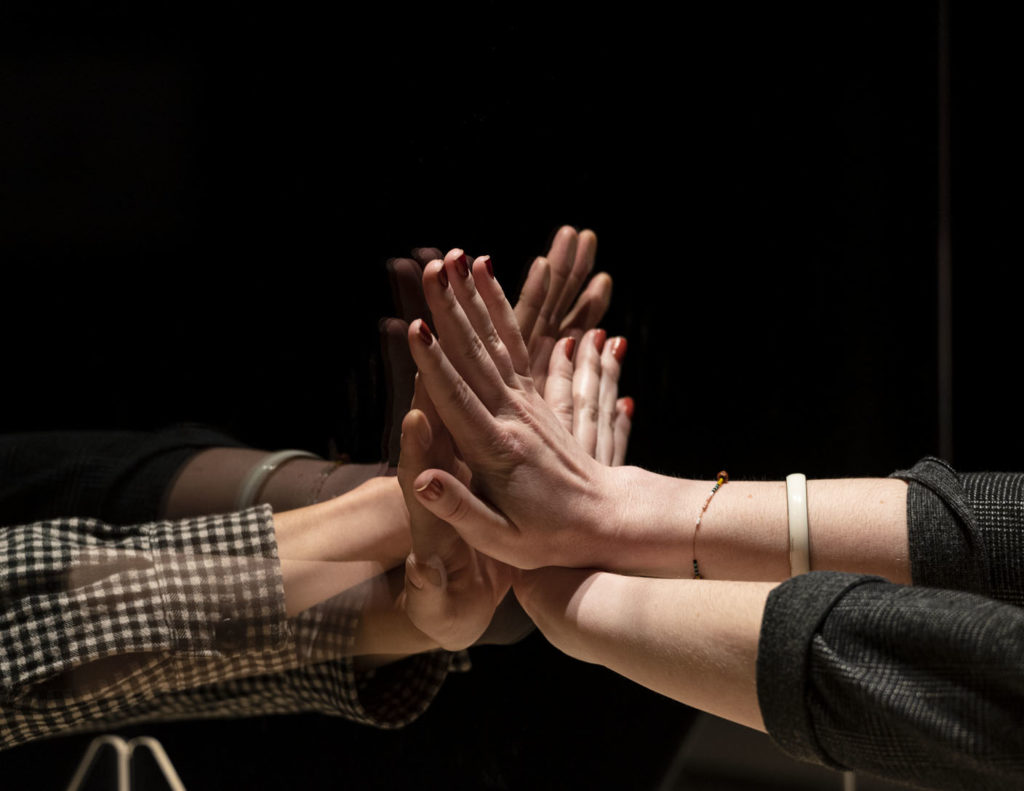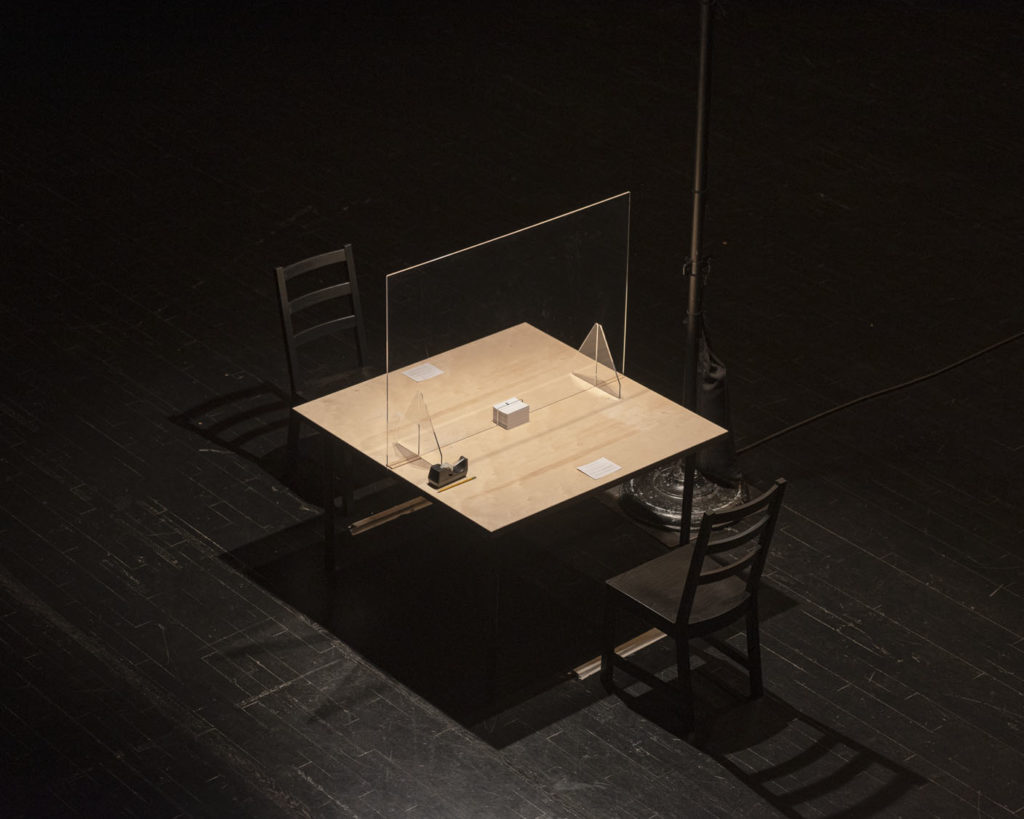JOCELYN MURPHY
jmurphy@nwadg.com
How often have you passed a stranger in the grocery store or looked across the aisle to the next fellow on the bus and wondered what type of music he listens to? What does her childhood home look like? Are they in love? Does he like to garden? What is she coping with?
Writer John Koenig has a word for this feeling in his ongoing collection “The Dictionary of Obscure Sorrows” — a collection of not yet “real” words, but terms that attempt to give definition to specific emotions that lack sufficient linguistic description.
Sonder (n.) is one of the project’s most familiar words and is defined as “the realization that each random passerby is living a life as vivid and complex as your own.” It also feels like a particularly apt way to explain just some of what you’ll encounter during the social experience and performative project “A Thousand Ways.”

“A Thousand Ways” was created by performance artists 600 HIGHWAYMEN as a triptych of encounters between strangers, designed to have the audience members themselves build a series of performances through guided instructions, questions and prompts.
“Part One: A Phone Call” was hosted by Bentonville arts space the Momentary from March 3 to April 3. Nearly 200 people found themselves on the other end of a phone call with an anonymous voice where, following automated prompts, the pair built a unique connection through mutual sharing. “Part Two: An Encounter” debuted June 2 and invites participants physically back into the Momentary for an intimate exercise in confronting and analyzing our assumptions of one another.
“Part Two offers a different level of connection than Part One — there are moments that feel similar as the artists designed the show as a triptych,” begins Pia Agrawal curator of performing arts at the Momentary. “But being able to make eye contact, and catch your partner’s unspoken reactions — a glimmer in their eye, a shift in body language — is really beautiful.
“For me, Part One and Part Two offer really gentle moments to challenge your own biases,” she continues. “What do you assume based on context clues: on your partner’s voice, their style of dress, the information they are choosing to share about themselves? As we all assess what it means to regather, Part Two provides an opportunity for you to work through how we get to know each other again, and how we open ourselves to be known. Part Two, similar to Part One, asks you to create a space for this level of intimacy — to slow down and listen. To slow down and be heard.”
Though I wouldn’t count myself among introverts, after a year inside and a life built around virtual and impersonal communication, I’ll admit there is a palpable awkwardness and even discomfort at the beginning of the encounter. We spend so much time and effort trying to avoid any interaction with strangers, and here I am intentionally sitting alone at a table with one.
The room is completely dark except for the single light that illuminates the table where you’re seated together. You and your companion are separated by a pane of Plexiglas at the center of the table, where you’ll also find a stack of note cards. The cards draw attention to the uniqueness of the situation — “It’s like we’re not supposed to be here” one prompts. And after a couple shared laughs over the strangeness, the uncertainty, I felt the ice break as I shook off the rust of navigating a shared experience with another human.

Like Part One, I did not know my partner’s name and would leave the experience not ever learning it. I don’t know that I’ll ever see her again, but I’ll remember her laugh as she talked about a recent hiking trip to a waterfall. I’ll remember her light hazel eyes and the scar she pointed to on her arm — though I don’t know its cause. And I’ll remember sharing a light chuckle of relief as we solved one of the card’s cooperative puzzles together.
I was prompted to leave the room first and was sad to go. I knew though I could try to explain the encounter, only my companion and I could truly ever know the feeling of overcoming our hesitance together, making the choice to step into a shared space of collaborative vulnerability.
Nothing too deep or embarrassing was prompted, but it still is an experience I shared — and will ever share — with only one other person in the whole world. And as I emerge from a year inside that fostered deeply homebody and antisocial tendencies, what a beautiful way to not only ease back into communal interactions, but change my perspective on connecting meaningfully with my fellow human beings.
FAQ
‘A Thousand Ways’
‘(Part Two): An Encounter’
WHEN — Through June 27
WHERE — themomentary.org
COST — $10; ($8/members)
INFO — 418-5700, themomentary.org
FYI — Dates and info for Part Three: An Assembly will be announced soon










